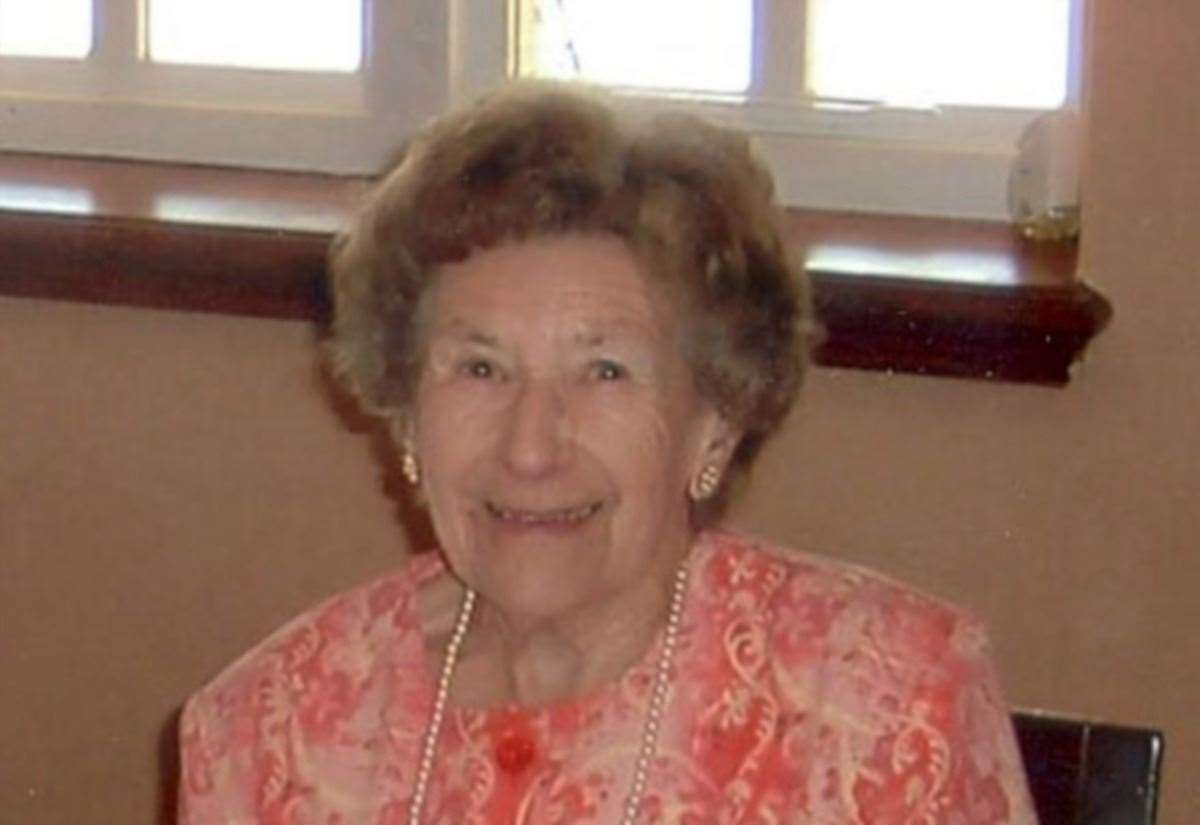The death of Una Crown wasn’t initially treated as suspicious by police, who let her family go into her bungalow which should have been treated as a crime scene – a court has heard.
It wasn’t until a post-mortem examination of the 86-year-old widow’s body was carried out that this changed, after stab wounds were found to her neck and chest.
The police officers that attended her address at Magazine Close in Wisbech when her body was discovered by a family member on January 13, 2013 determined that there was no foul play contributing to her death.

70-year-old David Newton’s trial continued this afternoon at Cambridge Crown Court, where it was put by prosecutor John Price that he had been seen out, drunk, walking his dog on the night Mrs Crown was killed.
Prosecutor John Price said that the police who attended the scene when Mrs Crown was discovered made a “grave error of judgement”.
Mrs Crown’s death was not treated as suspicious until a post-mortem examination was carried out 48 hours later.

During that time, Mrs Crown’s niece and her husband had been allowed by police into the property to obtain documents when it should have been closed off and forensically examined
The court also heard from Mr Price that during investigations into Mrs Crown’s death in 2023, DNA matching Newton’s was found in the fingernails of Una’s right hand.
Mr Price explained the prosecution’s explanation into this was that Mrs Crown had put her hand up in a defensive manner to protect herself when being attacked. There were also cuts on the palm of her hand.
The murder weapon, thought to be a long knife, along with Mrs Crown’s house key, thought to have been used and taken by the murderer, has never been found.

“The DNA match is not with some random male, it is a match with a man who had an opportunity. It was DNA of a person who lived nearby and was out and about close that night,” said Mr Price.
The court heard that Newton has given the same account of his supposed whereabouts on the night of Mrs Crown’s death.
He was first arrested on suspicion of Mrs Crown’s murder on January 21, 2013. The day before that, he had been questioned as a witness.

Newton, who had lived in the area for 34 years, told police at that time that he would have normally gone out to an ex-servicemen’s club in Wisbech to play snooker – despite not being an ex-serviceman himself.
However, he told officers he opted to stay in that evening due to not being able to afford to pay for the light used above the snooker table, which was 20p for every 10 minutes used.
He gave his recollection that he stayed in to watch “the usual Saturday night c**p” that was on television, and recalled watching Take Me Out on ITV 1 at 8.30pm.
However, a neighbour recalled seeing Newton walking his dog at around this time before he tripped over some of her shopping she was taking into her home.
The neighbour said that Newton appeared to be drunk at the time.
Newton also previously gave the account that he didn’t know Mrs Crown very well and would just say hello to her if he saw her out in her garden.
He was released on bail on Feburary 1 while investigations continued. On June 4, he answered bail and was interviewed by police again.
On July 1, Newton was told by police that he would not be charged as there was no available evidence.
He was re-arrested on April 15 2023.
Mr Price said that emergency services arrived at the scene shortly after Mr Payne, the husband of Mrs Crown’s niece, and the carer of a neighbour discovered the body.
Mrs Crown’s body had been set on fire, and the five layers of clothing she was wearing had been burnt as well as the carpet surrounding her.
Mr Price told the court that fire crews determined that the flames were started by something like a cigarette lighter.
In the morning, the court heard from the carer who accompanied Mr Payne, where she reported seeing several signs around the property that there had been a fire.
The court heard that fire crews believed there were three separate fires started in the building.
“If the purpose of the arsonist was to destroy evidence, then it would prove ineffective,” Mr Price said.
“The purpose of the two other fires was less clear. If he had wished to burn down his evidence, there might have been a more effective way of doing so. Did he just enjoy starting small fires?”
In a post-mortem examination, no soot was found in Mrs Crown’s lungs – suggesting that she had already passed away at the time the fires were ignited.
The prosecution believe that Mrs Crown’s time of death was between 7pm and 9pm on Saturday, January 12, 2013.
They said the evidence suggests that Mrs Crown had been watching television in her living room on the evening of her death. She had circled a series of shows in a television guide magazine, the last of which was a programme finishing at 8.50pm.
The prosecution suggested that Mrs Crown had planned to go to bed at around 9 pm. When she was found dead, she was still wearing her day clothes along with a pair of slippers.
Mr Price posed the question that Mrs Crown’s killer had either knocked at the front door and that the 86-year-old had let him in, or that the killer had let himself in.
He said that Mrs Crown spent most of her time alone in her home and would leave the house infrequently apart from to go food shopping, to the hairdressers or to her niece’s for lunch.
Mrs Crown was independently mobile, but used a walking stick to help her.
This stick was later found with some of her blood on it in the hallway.
